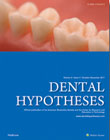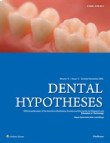فهرست مطالب

Dental Hypotheses
Volume:8 Issue: 4, Oct-Dec 2017
- تاریخ انتشار: 1396/10/02
- تعداد عناوین: 9
-
Page 87IntroductionAn assessment of computer literacy and readiness is required for successful implementation of a structured computer-assisted learning (CAL). The present study was aimed to assess and compare computer literacy, attitude toward implementation of a structured CAL, and the current level of use of computer/laptop for academic purposes by students and faculty. In addition, the difference in attitude toward structured CAL and the current level of use of computer/laptop, based on computer literacy were evaluated.Materials And MethodsIn this cross-sectional study 316 undergraduate students and 57 faculties of a dental school in India. Computer literacy, the current level of use, and attitudes toward a structured CAL were assessed using a questionnaire. Participants were divided into basic user, intermediate user, and advanced user based on computer literacy. Data were analyzed using Chi-square test.ResultsMost of the students and faculty were intermediate users. Faculty used the internet for academic purposes at a significantly higher frequency and accessed a wide variety of internet sites and material as compared to students. Most of the students and faculty favored introducing a structured CAL. The favorable attitude toward structured CAL and the better utilization of laptops for academic purposes were associated with the level of computer literacy among students.ConclusionsBoth faculty and students favor the use of structured CAL. Higher computer literacy results in more use and favorable attitude toward structured CAL among students. Further training of faculty and students is needed to improve the readiness and utilization of CAL.Keywords: Computer literacy, dental education, utilization
-
Page 94IntroductionThe aim of this ex vivo study was to check the antimicrobial efficacy of silver nanoparticles with and without different antimicrobials against Enterococcus faecalis and Candida albicans.Materials And MethodsTwo-hundred and fifty two freshly extracted single-rooted human teeth were contaminated with E. faecalis and C. albicans. The teeth were randomly divided into five experimental (n = 21) and one control group (n = 21). Each subgroup was then exposed to different antimicrobials, namely calcium hydroxide (Ca(OH)2) (Group 1), 2% chlorhexidine (CHX) (Group 2), silver nanoparticles (SNP) (Group 3), SNP with Ca(OH)2 (Group 4), SNP with 2% CHX (Group 5), and saline as control group (Group 6). Cultures were made from each group after 24 h, 7 days, and 14 days, and colony forming units were counted. The KruskalWallis test was used to compare the study parameters among the groups at 24 h, 7 days, and 14 days.ResultsSignificant difference was found in the antimicrobial efficacy of different intracanal medicaments against E. faecalis and C. albicans after 24 h, 7 days, and 14 days. 2% CHX was found to be the most effective medicament at 24 h, 7 days, and 14 days against E. faecalis and C. albicans. Combination of SNP with 2% CHX and Ca(OH)2 and SNP alone ranked second in their antimicrobial efficacy against E. faecalis and C. albicans at 24 h, 7 days, and 14 days, respectively.Conclusion2% CHX was more effective as intracanal medicament against E. faecalis and C. albicans biofilm in both short as well as long-term duration, i.e., at 24 h, 7 days, and 14 days.Keywords: Calcium hydroxide, Candida albicans, chlorhexidine, Enterococcus faecalis, nanoparticles
-
Page 100IntroductionThe use of cone-beam computed tomography (CBCT) has increased lately. The aim of this study was to evaluate the accuracy of linear and angular measurements by CBCT in the different areas of the jaws.Materials And MethodsIn this study, the mesiodistal width and height as well as the angular measurements were ascertained in four different sites of the mandibular and maxillary jaws (anterior, canine, premolar, and molar regions). Each area was outlined by gutta-percha as opaque markers. The measurements were obtained by a digital caliper (as gold standard) and on CBCT views including three-dimensional and panaroma (section thickness of 5 and 10 mm). Data were analyzed by the one-way analysis of variance (ANOVA).ResultsThe means [standard deviation (SD)] of measurement accuracy of all groups were more than 90%. There was no significant difference between the means (SD) of measurement accuracy of all views (oneway ANOVA, P > 0.05). The means (SD) of measurement accuracy of all views in four regions of the jaws had no significant difference (one-way ANOVA, P > 0.05).ConclusionThis study showed that CBCT imaging has a high degree of measurement accuracy in all three horizontal, vertical, and angular measurements as well as the panorama (5- and 10-mm thicknesses) and three-dimensional views in all the areas of the jaws. Therefore, the use of CBCT in the linear and angular measurements of the dentomaxillofacial region can be recommended.Keywords: Angular measurement, CBCT, jaw, linear measurement
-
Page 104IntroductionDentin hypersensitivity is a commonly occurring condition characterized by short, sharp pain arising from the exposed dentine in response to stimuli.Materials And MethodsSeventy extracted human permanent molars were selected and divided into four groups. The photomicrographs of the surface from the center of each dentinal block were obtained using a scanning electron microscope. The objective of this study was to evaluate the ability of three desensitizing dentifrices − SHY-NM (NovaMin), Sensitive Pro-Relief (8% arginine and calcium carbonate) and Thermoseal (10% strontium chloride) − for dentinal tubule occlusion using a scanning electron microscope.ResultsAll of the desensitizing dentifrices evaluated, SHY-NM showed the highest percentage of tubular occlusion (95.58%) followed by Sensitive Pro-Relief (89.90%). The least amount of tubular occlusion was shown by Thermoseal (86.12%).ConclusionNovaMin-containing toothpaste, SHY-NM, showed maximum tubular occlusion and it appears to be a promising desensitizing dentifrice.Keywords: Dentin hypersensitivity, novamin, pro-argin, tubular occlusion
-
Page 110IntroductionPatients receiving home dental treatment typically have worse activities of daily living (ADL) scores than those of dental clinic outpatients. They cannot live independently, without somebodys help, because of disabilities and motor dysfunction. In home-care, treatment for dysphagia is important for maintaining or improving ADL. New indicators that can be measured more simply and more quantitatively are required.
The Hypothesis: We hypothesized that measurements obtained using a body composition analyzer may be applicable as a whole-body condition evaluation method for home-care patients. The advantage is its simple operation, lack of invasiveness, and short measurement time.
Evaluation of the Hypothesis: If certain easy-to-use devices that can be used for home-based measurements can be developed in future, it may become possible to perform more effective check-ups in home-care cases. On the basis of the measurements obtained in this manner, patients can be provided rehabilitation plans and daily meal guidance.Keywords: Activities of daily living, body composition, frail elderly, home care services, muscles -
Page 113IntroductionComplicated crown-root fractures are rare and their treatment is complex. Numerous methods such as crown lengthening and orthodontic or surgical extrusion have been described for the treatment of crown-root fracture. The aim of this study was to report managing complicated crown-root fracture using intentional replantation with 180° rotation.
Case report: This case report demonstrates successful management of complicated crown-root fracture in central incisor of a 10-year-old boy using intentional replantation with 180° rotation.DiscussionAt 18-month follow-up, the replanted tooth revealed normal function with no obvious resorption.Keywords: Tooth Crown, Tooth Fractures, Tooth Replantation


